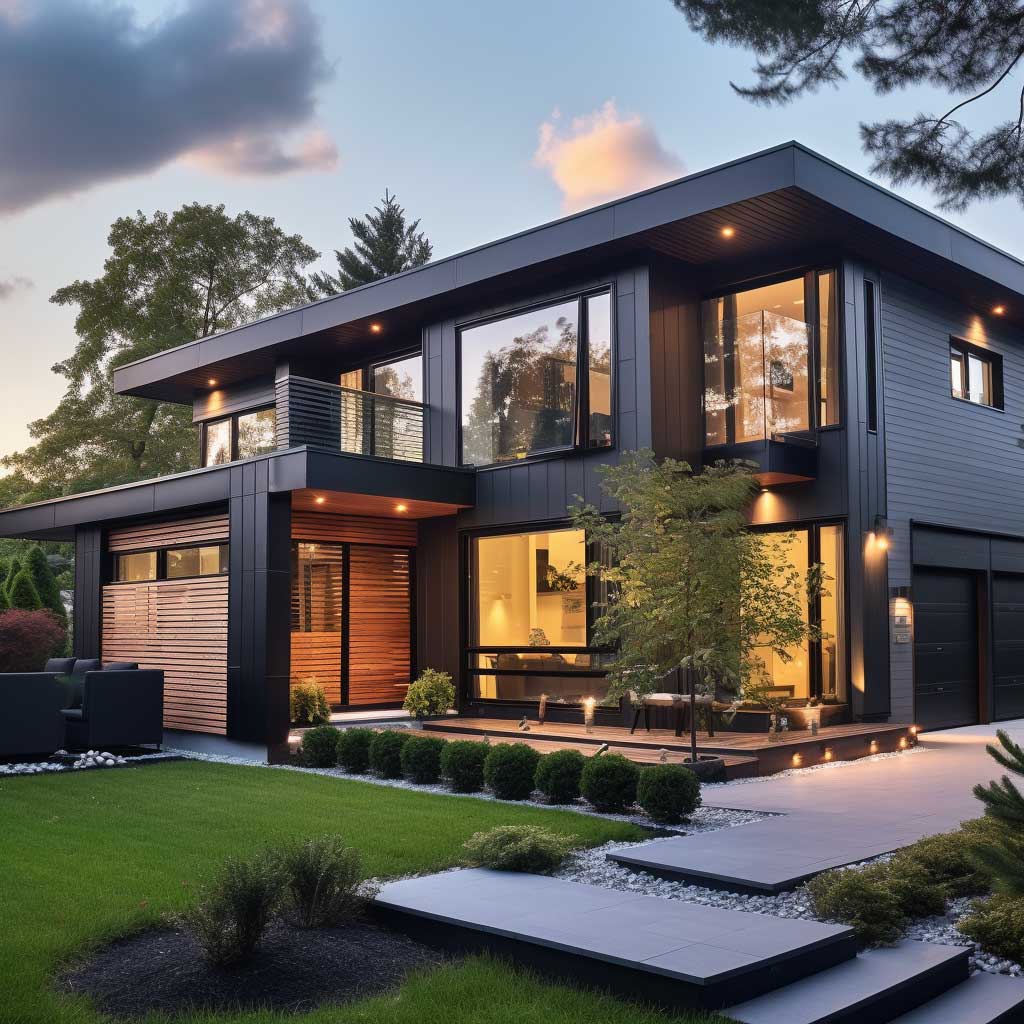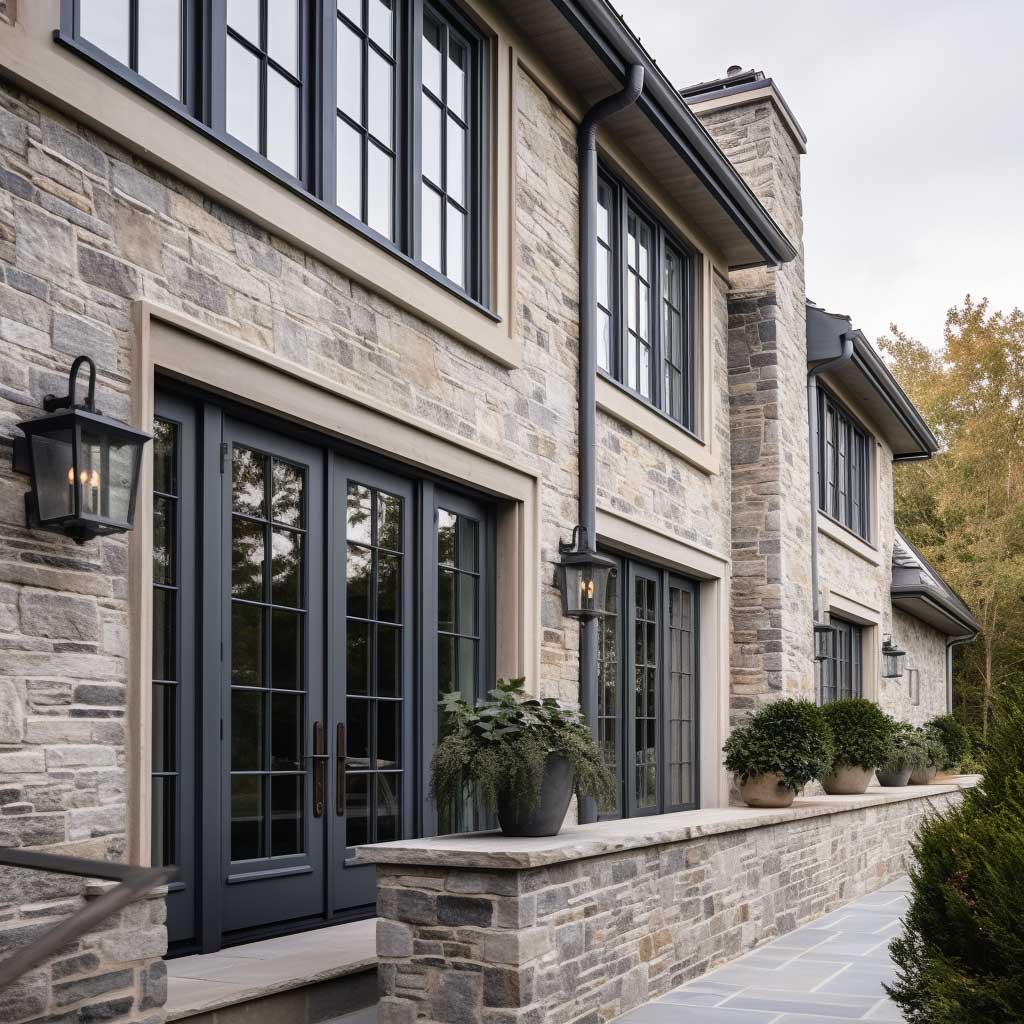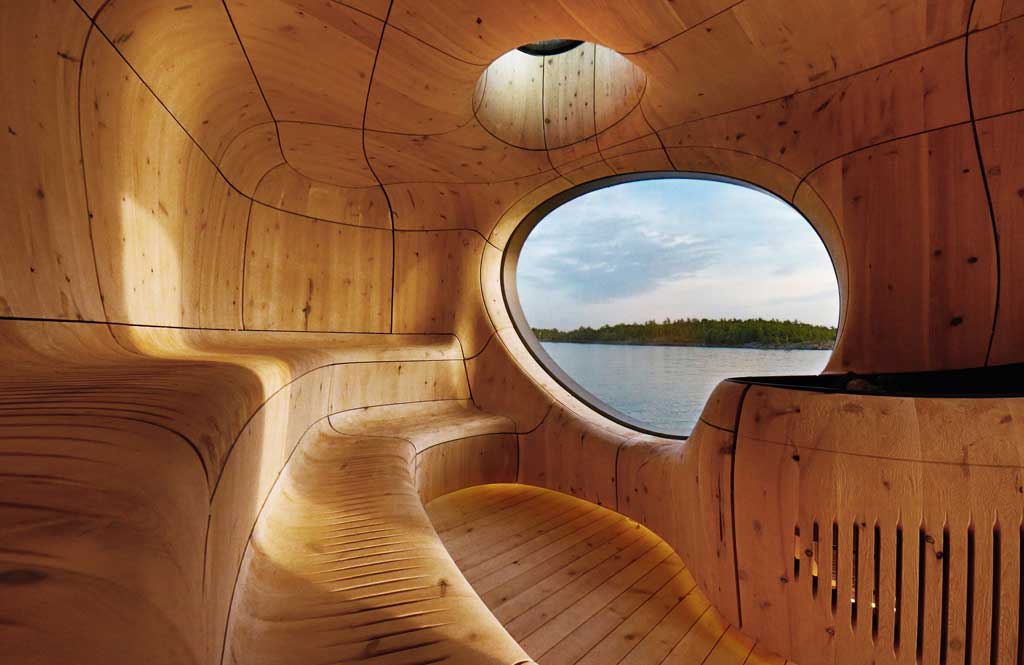Welcome to the world of modern exterior design, where the elegance of tongue and groove cladding transforms the façade of homes. This feature delves into the diverse applications and aesthetic appeal of modern exterior tongue and groove cladding solutions, showcasing how this timeless material can elevate the look and feel of contemporary homes. With its unique blend of style and functionality, tongue and groove cladding has become a popular choice for homeowners seeking to enhance their property’s exterior.
Sleek Wooden Finish with Exterior Tongue and Groove Cladding




The beauty of a home’s exterior is often its first impression, a statement of its character and style. One of the most striking ways to enhance this visual appeal is through the use of exterior tongue and groove cladding, particularly when it embodies a sleek wooden finish. This approach to cladding not only provides a home with a stunning aesthetic but also offers practical benefits that make it a preferred choice for homeowners and architects alike.
Exterior tongue and groove cladding in wood creates a seamless and elegant finish, showcasing the natural beauty and warmth of wood. This type of cladding involves interlocking panels, where a ‘tongue’ on one panel fits into a ‘groove’ on the next, creating a smooth and continuous wooden facade. The result is a sophisticated and uniform appearance that can dramatically transform a home’s exterior.
Wood, as a material for exterior cladding, brings a sense of timelessness and versatility to the design. It can be adapted to fit a wide range of architectural styles, from rustic and traditional to sleek and modern. The type of wood used, its color, and finish can all be selected to complement the overall architectural theme of the home. For instance, darker woods like mahogany or walnut can lend a sense of grandeur and luxury, while lighter woods like pine or cedar can create a more relaxed, beachy vibe.
The practical benefits of exterior tongue and groove cladding go beyond its visual appeal. Wood is a naturally insulating material, providing an additional layer of thermal insulation to the home. This can result in energy savings, as it helps to keep the interior warmer in winter and cooler in summer. Moreover, when treated properly, wood cladding can be incredibly durable, resistant to weathering, and can last for decades with minimal maintenance.
Installation of tongue and groove cladding is another area where this option shines. The interlocking design not only aids in creating a flawless finish but also makes the installation process more straightforward and secure. Each panel supports the next, reducing the likelihood of warping or gaps that can occur over time. This means that the cladding remains robust and intact, effectively protecting the home from external elements.
However, the choice of wood and its treatment is critical in ensuring the longevity and appearance of the cladding. Using sustainably sourced, high-quality wood treated with preservatives can prevent issues such as rot, mold, or insect damage. Additionally, the application of finishes and sealants can further protect the wood from UV rays and moisture, preserving its color and texture for longer.
In conclusion, a sleek wooden finish with exterior tongue and groove cladding offers a blend of aesthetic elegance and practicality that can elevate the appearance of any home. Its ability to seamlessly integrate with various architectural styles, coupled with its insulating properties and durability, makes it an excellent choice for those looking to enhance their home’s exterior with a touch of sophistication and functionality.
Contemporary Home Facades Using Tongue and Groove Cladding




In the realm of modern architecture, the facade of a home is not just a protective shell but a canvas for artistic expression. Contemporary home facades using exterior tongue and groove cladding represent a fusion of innovative design and classic material choice, creating a visual narrative that is both compelling and enduring. This approach to exterior design harnesses the unique qualities of tongue and groove cladding to craft facades that are not only visually appealing but also structurally sound and environmentally conscious.
The design philosophy behind using tongue and groove cladding in contemporary home facades is rooted in the desire for clean lines, uncluttered aesthetics, and seamless integration with the natural surroundings. The precise interlocking mechanism of tongue and groove cladding lends itself to creating sleek, uniform surfaces that are devoid of visible nails or joints. This feature is particularly appealing in modern design, where minimalism and simplicity are often key.
One of the standout characteristics of this type of cladding is its versatility in terms of materials and finishes. While wood is a popular choice, modern variations include composite materials, metals, and even engineered products that mimic natural textures. These materials offer a broader palette of colors and finishes, allowing architects and homeowners to customize the facade to their exact specifications and style preferences. For example, a matte black metal tongue and groove cladding can imbue a home with a bold, industrial edge, while a composite material with a wood finish can provide a contemporary twist on traditional aesthetics.
The structural benefits of tongue and groove cladding are also significant. The interlocking design ensures a tight seal, offering enhanced protection against the elements. This is particularly important in climates with heavy rain or wind, where the integrity of the facade can significantly impact the overall durability of the structure. Additionally, this cladding style allows for the incorporation of effective insulation materials, improving the energy efficiency of the home.
In the context of environmental sustainability, contemporary home facades using tongue and groove cladding can be seen as a responsible choice. Many modern cladding materials are sustainably sourced or recycled, reducing the ecological footprint of the construction process. Additionally, the longevity and low maintenance requirements of these materials contribute to a more sustainable approach to home design.
The aesthetic impact of tongue and groove cladding on contemporary home facades cannot be overstated. The way light and shadow play across the uniform surface of the cladding can create dynamic visual effects, changing the appearance of the facade throughout the day. This interaction with natural light adds a living, ever-changing element to the design, making the home not just a static structure but a dynamic part of its environment.
In conclusion, contemporary home facades using exterior tongue and groove cladding represent a perfect blend of form and function. They offer a modern, sleek aesthetic that is customizable to various styles, while also providing practical benefits in terms of protection, insulation, and sustainability. This approach to exterior design is not just about creating a beautiful facade; it’s about shaping a home that is harmonious with its surroundings, efficient in its function, and expressive in its architectural narrative.
Innovative Design with Durable Tongue and Groove Exterior Cladding




The architectural landscape is continually evolving, with innovative design playing a pivotal role in shaping modern homes. One such innovation that has gained popularity in recent years is the use of durable tongue and groove exterior cladding. This method not only offers a visually stunning addition to any home but also brings a host of practical advantages, making it a smart choice for homeowners seeking both style and substance in their exterior design.
Tongue and groove cladding, characterized by its interlocking panels, presents a sleek and uniform appearance that is highly sought after in contemporary architecture. This cladding style is particularly effective in creating smooth, clean lines that are integral to modern design aesthetics. The precise way in which the panels fit together ensures a neat and ordered look, which is essential for achieving a minimalist and sophisticated facade.
The durability of tongue and groove exterior cladding is one of its most compelling attributes. Designed to withstand the elements, this cladding type is often made from materials that are not only tough but also resistant to rot, decay, and insect infestations. This makes it an ideal choice for homes in a variety of climates, offering long-lasting protection and maintaining its aesthetic appeal over time. Materials such as treated wood, composite, or even certain metals are common choices, each offering their own unique benefits and visual characteristics.
Another significant advantage of tongue and groove cladding is its thermal efficiency. The tight seal created by the interlocking panels provides excellent insulation, helping to keep the home warm in the winter and cool in the summer. This can lead to substantial energy savings and a more comfortable living environment. Moreover, the ability to integrate additional insulation materials within the cladding structure further enhances its efficiency, making it an environmentally friendly option.
From an aesthetic standpoint, the versatility of tongue and groove cladding allows for a wide range of design possibilities. Whether homeowners prefer a traditional wood finish or a more modern composite look, the variety of materials and finishes available means that there is something to suit every taste and style. Additionally, the option to paint or stain the cladding in various colors provides an opportunity to personalize the home’s exterior and make a distinct architectural statement.
In the context of modern architecture, where innovation and sustainability are increasingly important, durable tongue and groove exterior cladding represents a forward-thinking choice. It aligns with the principles of sustainable building practices, often involving materials that are eco-friendly and responsibly sourced. Furthermore, the low maintenance nature of this cladding type means that it does not require frequent replacements or repairs, reducing waste and further contributing to its sustainability.
In conclusion, the incorporation of durable tongue and groove exterior cladding in modern homes is more than just a trend; it’s a testament to the advancements in architectural design and material technology. Offering a blend of aesthetic beauty, structural integrity, thermal efficiency, and environmental consciousness, this cladding style stands as a prime example of innovative design in action. It not only enhances the exterior appearance of a home but also contributes to its overall functionality and sustainability, making it a smart and stylish choice for contemporary living.
Modern exterior tongue and groove cladding is more than just a functional element; it is a statement of style and a testament to innovative design. The versatility it offers makes it suitable for various architectural styles, from traditional to contemporary. Its ability to provide insulation, durability, and an aesthetically pleasing exterior makes it a wise choice for homeowners and designers alike. As we have seen, the application of this cladding can utterly transform the appearance of a home, giving it a fresh, modern, and sophisticated look.






